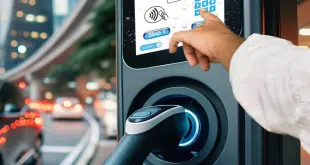By Jim Daly
@DTPaymentNews
If they could assign a letter grade to the first year of EMV chip card payments in the U.S., half of Digital Transactions News readers would give it an “F,” according to results of the daily e-newsletter’s weekly poll.
The newsletter’s Sept. 23 edition asked respondents to rate the conversion from “A,” indicating minimal problems, to “F,” which would indicate they experienced one or more major problems with the EMV conversion that officially started Oct. 1, 2015, with the card networks’ point-of-sale liability shifts. In addition to 50% grading it an “F,” some 17% of respondents gave the conversion a “D,” meaning that two-thirds of them believe EMV has been fraught with problems.
Nineteen percent of respondents gave the conversion a grade of “C,” while 14% gave it a “B.” No one rated it an “A.”
The poll was not scientific, but the results reflect the views Digital Transactions News and its sister publication, Digital Transactions magazine, have been picking up from people across the payments industry over the past year. Merchants, especially, have complained about numerous problems, including slow transaction times, bottlenecks in getting EMV terminals and software certified before their POS systems can process chip card transactions, issues with getting EMV debit card transactions routed to PIN-debit networks, and more chargebacks that in pre-liability shift days would have been absorbed by card issuers. The liability shifts assign responsibility for counterfeit card transactions to the party—issuer or merchant—that doesn’t support EMV.
“I gave it an ‘F,” if I could have given it a lower grade I would have,” says Mark Horwedel, chief executive of the Merchant Advisory Group, a Minneapolis-based association of retail executives concerned with payments issues. “From what I’ve heard from merchants, even those that are EMV-compliant, it’s been an unmitigated disaster.”
In light of what its members consider a negative experience in implementing EMV inside stores, the MAG recently sent a letter to CEOs of Visa Inc. and MasterCard Inc. asking the networks to “rethink the appropriateness and feasibility” of gas stations meeting terms of their planned Oct. 1, 2017, EMV liability shifts for fuel pumps. The letter says fuel-pump EMV conversion costs can run six to eight times greater than in-store retrofits, and that even a small petroleum retailer can spend $50,000 or more per store. MAG says it hasn’t yet received replies to the letter.
But with the goal of getting the U.S. off of its dependence on outdated and fraud-prone magnetic-stripe cards, the networks have strongly supported the EMV conversion. On Saturday, a MasterCard liability shift takes effect for U.S. ATMs.
“There’s been so much that’s been accomplished,” Stephanie Ericksen, Visa’s vice president of risk and authentication products, tells Digital Transactions News. Visa noted this week that 30% of its U.S. transaction volume now comes from chip cards read by chip card terminals.
“The U.S. is one of the most complex markets in the world so things won’t change overnight, but MasterCard is seeing great progress on chip cards issued and chip-active merchants,” Chiro Aikat, MasterCard senior vice president of product delivery, EMV, says by email. MasterCard says 2 million U.S. merchants now accept EMV cards and that 88% of its consumer credit cards now have chips.
The networks, however, have acknowledged the complaints about certification delays and slow transaction times, and provided some relief in the form of reduced chargeback liability. Ericksen also notes that the EMV conversion is coming at a time when the industry its broadening its options for consumers with mobile payments, and it also is implementing new data-security systems.
“It’s all a great choice for consumers and merchants, but choice always brings complexity,” she says.
The survey respondents “may be focusing solely on the point-of-sale conversion, where there have been issues to date,” Randy Vanderhoof, executive director of the Princeton Junction, N.J.-based Smart Card Alliance trade group and director of its affiliate, the U.S. Payments Forum, formerly the EMV Migration Forum, says in an email message. “Every country that has implemented EMV has had similar issues, and it has been compounded in the U.S. market by the sheer number of acceptance points multiplied by the number of unique combinations of different hardware and software solutions in the market.”
Vanderhoof says the U.S. Payments Forum is working “to identify pain points with the EMV migration and address issues to help move faster merchant enablement forward and help them reach their goal of chip card acceptance to avoid counterfeit fraud risk more quickly. We do expect to see merchant enablement to progress through this next year, and also see those merchants optimizing transaction speeds at the POS to improve the consumer experience.”





